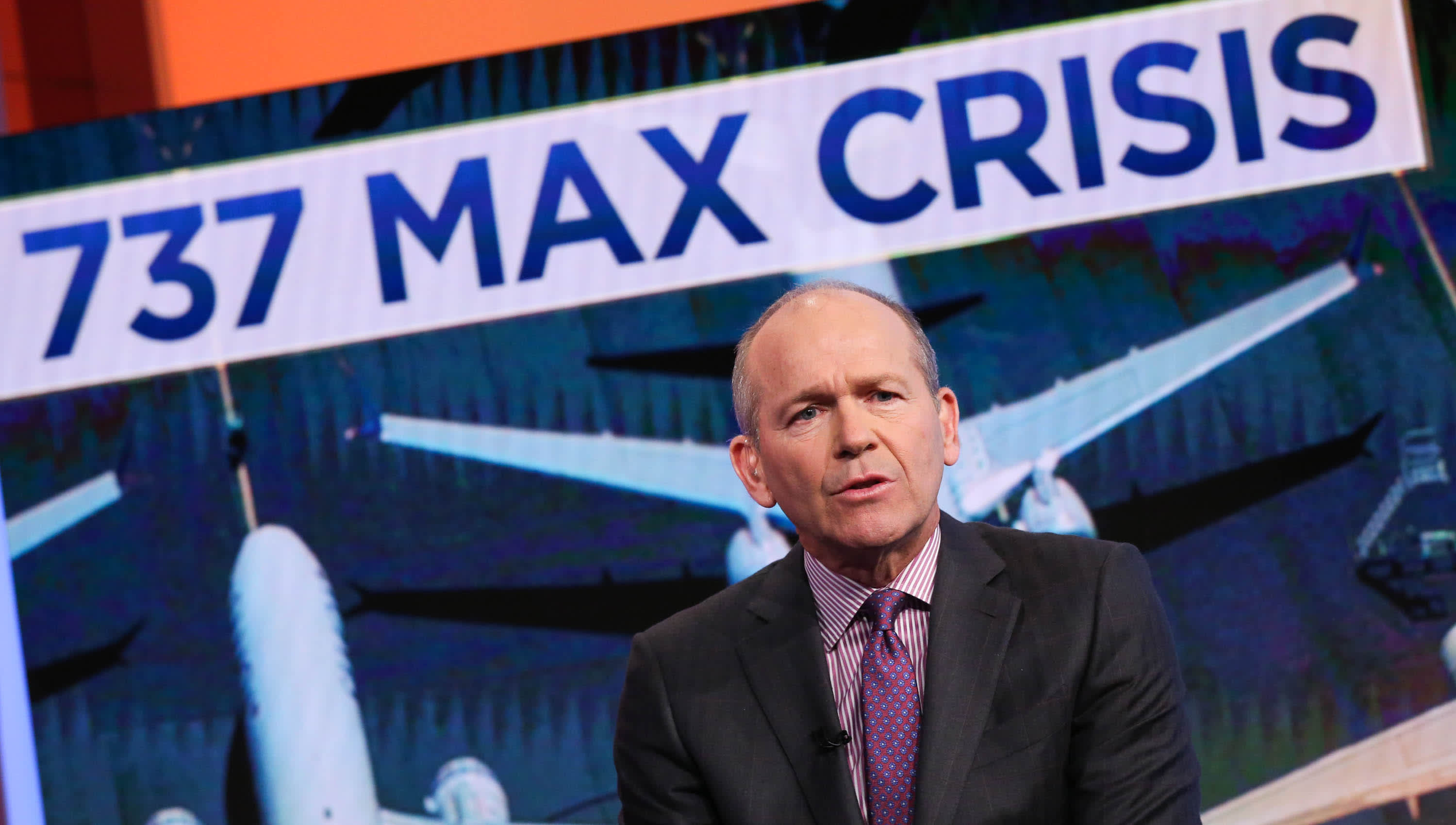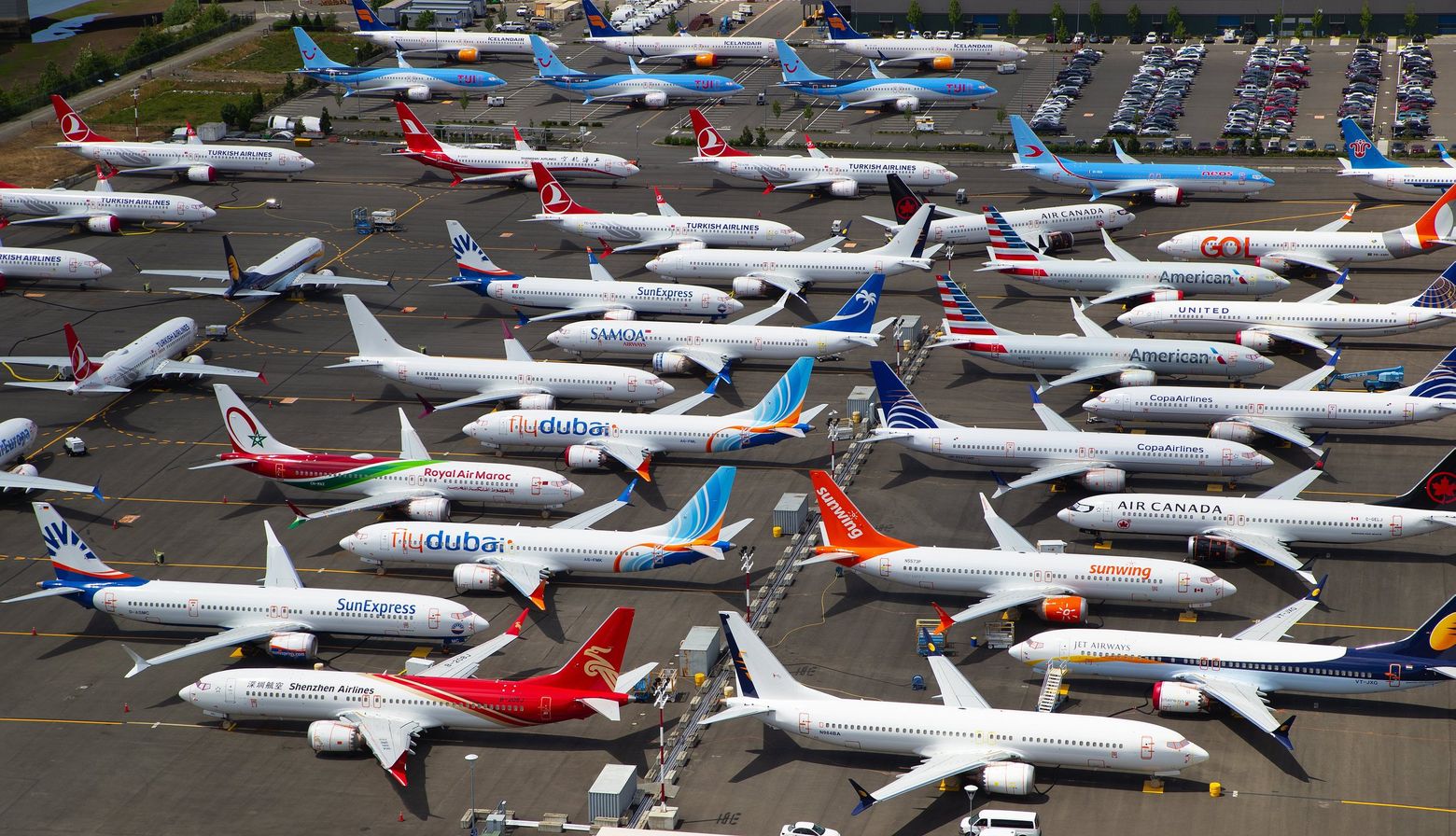Leeham News and Analysis
There's more to real news than a news release.
Breaking News: Muilenburg out, Calhoun becomes president and CEO, Kellner named chairman
Dec. 23, 2019: Boeing press release:
(Leeham News analysis to come.)
New Leadership to Bring Renewed Commitment to Transparency and Better Communication With Regulators and Customers in Safely Returning the 737 MAX to Service
CHICAGO, Dec. 23, 2019 /PRNewswire/ — Boeing [NYSE: BA] announced today that its Board of Directors has named current Chairman, David L. Calhoun, as Chief Executive Officer and President, effective January 13, 2020. Mr. Calhoun will remain a member of the Board. In addition, Board member Lawrence W. Kellner will become non-executive Chairman of the Board effective immediately.

David Calhoun is named president and CEO of Boeing. Source: CNBC photo.
The Company also announced that Dennis A. Muilenburg has resigned from his positions as Chief Executive Officer and Board director effective immediately. Boeing Chief Financial Officer Greg Smith will serve as interim CEO during the brief transition period, while Mr. Calhoun exits his non-Boeing commitments.
The Board of Directors decided that a change in leadership was necessary to restore confidence in the Company moving forward as it works to repair relationships with regulators, customers, and all other stakeholders.
Boeing tells union: MAX production halt “weeks;” others see months
Subscription Required
By Scott Hamilton and Byran Corliss
Introduction
Dec. 23, 2019, © Leeham News: The Boeing 737 MAX production shut down will be measured in “weeks,” Boeing told one of its unions.
But “weeks” is a highly open-ended description.
One supplier estimated for LNA that the suspension will be at least 60-90 days.
An aerospace analyst sees the halt lasting 3-6 months at a minimum.

Boeing 737 MAXes stored at Boeing Field. Source: Seattle Times.
LNA’s analysis does not see production resuming before the Federal Aviation Administration notifies Boeing that it has a date certain for recertification. It has announced no timeline, although published reports already suggest this could be any time from mid-February to well into March.
But these are speculative dates.
Summary
- Boeing now says that once certification is achieved, delivering from the inventory is a priority over producing new airplanes.
- This raises additional uncertainty over restarting production.
- Spirit Aerosystems has some 90 fuselages in storage.
Read more
Pontifications: There was other news in 2019 besides MAX. Really.
Dec. 23, 2019, © Leeham News: The Boeing 737 MAX crisis clearly dominated the news this year.
It’s felt like the aviation stories have been all-MAX, all-the-time.
Believe it or not, there was aviation news other than the MAX.
Boeing union creates strike fund for 2024 contract negotiations
Dec. 21, 2019, © Leeham News: The International Association of Machinists District 751, the touch-labor union at Boeing’s Seattle-area plants, launched a campaign for a strike fund this week.
The current labor contract expires in September 2024, five years from now.
Nevertheless, the union announced its campaign on its Facebook page and a micro-website here.
The union urges members to contribute $50 per paycheck to raise $6,000 by 2024.
Bjorn’s Corner: Why e in ePlane shall stand for environment, Part 2. Fly shorter routes.
December 20, 2019, ©. Leeham News: We continue our series why e in ePlane shall stand for environment and not electric.
If our target is to lower the environmental footprint from air transport we must have a target that focuses just that, lowering the CO2 load from our airliners. Electric or Hybrid-electric aircraft are not the most efficient way to achieve this. There are better ways to this target.
Why did Qantas choose Airbus’ A350-1000 for project Sunrise?
By Bjorn Fehrm
Subscription Required
Introduction
December 19, 2019, © Leeham News: Qantas Airways declared the Airbus A350-1000 the winner for its project Sunrise last week. After two years of competition with Boeing’s 777-8, it was the preferred aircraft for what many say is the holy grail of airline routes, the Sydney-London route.
Many speculate it’s the delay in the availability of the 777-8 that was the deciding factor. We use our airliner performance model to check if this is true or if there are other factors that turned the A350-1000 the favorite.
Summary:
- The A350-1000 is a stretch from the A350-900 while the 777-8 is a shrink from the larger 777-9.
- A derivative based on a stretch is often more efficient than one based on a shrink.
- When Airbus adjusts the Maximum Take-Off Weight and fuel capacity of the A350-1000, it can fly the routes Qantas asks for.
Minimum 3-6 month 737 MAX production shutdown seen
Dec. 17, 2019, © Leeham News: Boeing announced yesterday a suspension in production of the 737 MAX line. It didn’t put a timetable to the shutdown.
But one aerospace analyst predicts the shutdown will be a minimum of three to six months.
The reason? Boeing listed as its new priority, after recertifying the airplane, as clearing out the inventory of 400 stored new-production aircraft.
- LNA was the first outlet to raise the prospect that Boeing was nearing a decision point on whether to reduce or suspend production. The post has two graphics: one shows where the MAXes are stored and the other shows deliveries vs production.
SunTrust Robinson Humphrey made the prediction in a note issued after Boeing’s after-market announcement yesterday.
Analysts align in reaction to MAX production suspension
 Dec. 17, 2019, © Leeham News: Wall Street analysts were fairly aligned in their reaction to Boeing’s decision to suspend production.
Dec. 17, 2019, © Leeham News: Wall Street analysts were fairly aligned in their reaction to Boeing’s decision to suspend production.
Below are excerpt of some of the research notes received by LNA:
Boeing halts 737 production
Dec. 16, 2016: Boeing said it is suspending 737 MAX production.
Here is the full press release.
Are AirAsia and AirAsia X outgrowing their key markets?
Subscription Required
By Judson Rollins
Introduction
Dec. 16, 2019, © Leeham News: AirAsia and long-haul sister AirAsia X have been growing at world-leading rates for much of the past two decades. AirAsia’s fleet growth in the 2000s was so rapid that it quickly became a top customer of Airbus’s A320 program; the airline is now second only to India’s IndiGo as an A320neo customer.
However, neither of the airlines nor their joint venture partners across Asia are producing solid financial returns–making it questionable whether they can economically fly all the aircraft they have on order.
Summary
- Mediocre financial results after lease expenses;
- Debt loads are above industry average, especially at AirAsia X;
- One of the world’s largest order books, especially for A320neos;
- Key bases in countries where capacity growth outstrips local economic trends.






 By Scott Hamilton
By Scott Hamilton